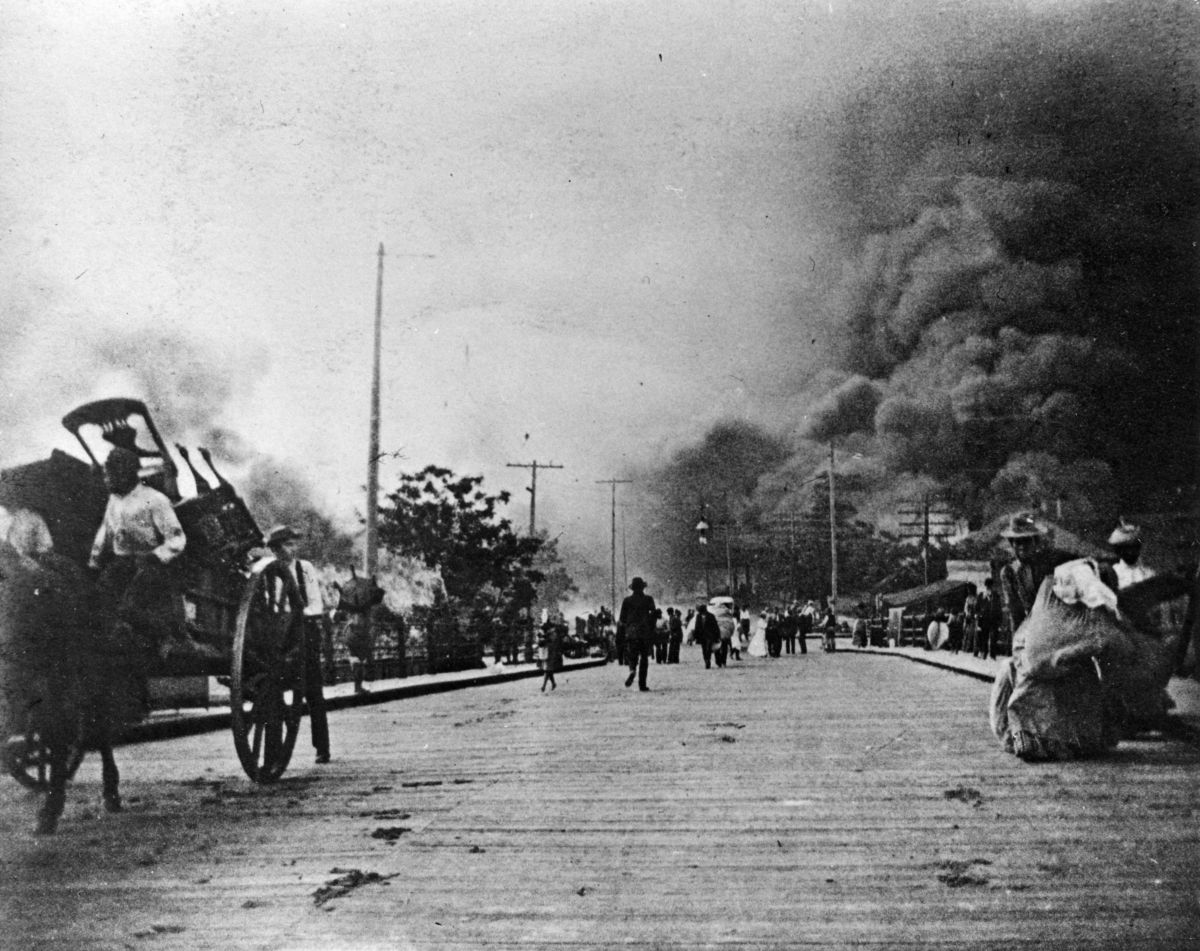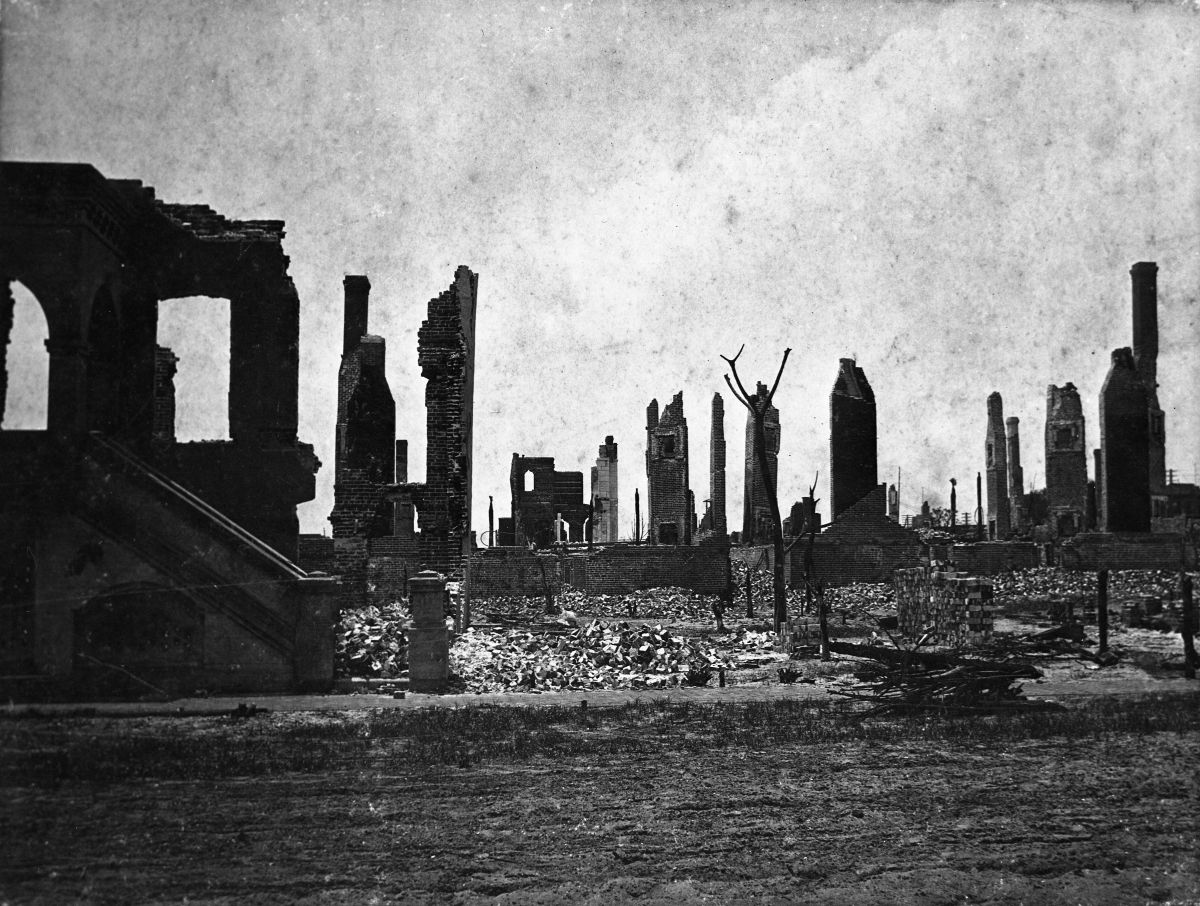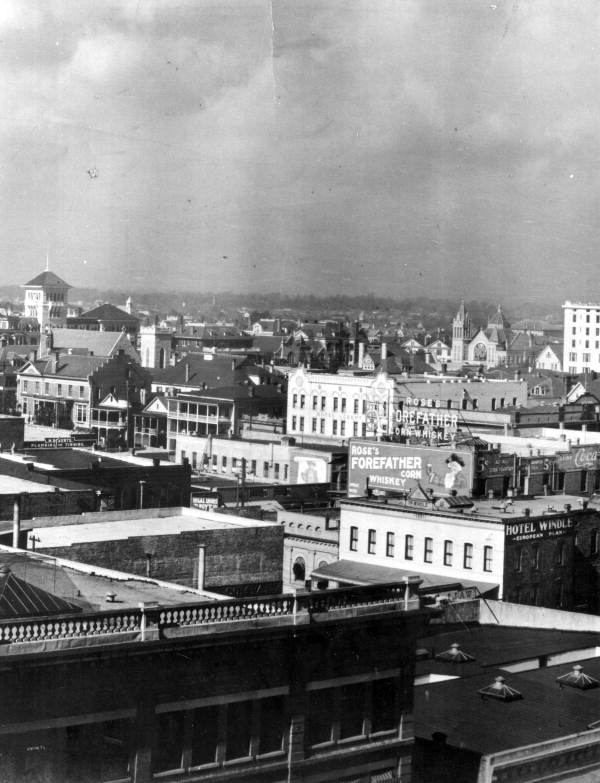Description of previous item
Description of next item
The Great Jacksonville Fire of 1901
Published May 5, 2016 by Florida Memory
The morning of Friday, May 3, 1901, dawned like any other late spring day in Jacksonville. Men and women went to work, children went to school, and soon the city was humming with its usual bustle of activity. By one o’clock that afternoon, however, the lazy calm would erupt into the most destructive disaster of the city’s history. A fire strengthened by favorable winds, dry conditions, and a path laden with wooden buildings would rage through Jacksonville, destroying thousands of buildings and millions of dollars in property.
It all started at the Cleaveland Fibre Factory near the corner of Beaver and Davis streets in the LaVilla neighborhood. Workers had been busily laying moss out to dry in the sun when the noon whistle sang out to announce lunch. They made their way to the shade of the trees to eat, leaving the moss unattended. Normally, a few men would stick around to make sure no ashes or embers from the surrounding neighborhood made their way to the drying fibers, but on this day the lack of wind made such precaution seem unnecessary.
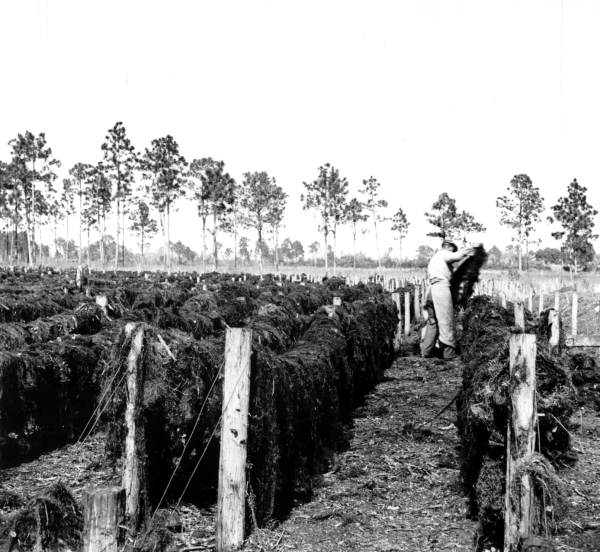
This Spanish moss drying operation is similar to the one that started the Great Jacksonville Fire (photo 1946).
Then one of the workers noticed a small glowing spot in the moss and went over to investigate. Finding that the moss had somehow caught fire in several places, he called for help, but a deadly chain of events was already in motion. The wind, which had stayed quiet all morning, suddenly came to life, sending burning bits of moss closer and closer to the shed where the company’s stock of dried fibers was stored. The building ignited and was quickly engulfed in flames, flinging burning embers into the surrounding area. More buildings caught fire, and before long Chief T.W. Haney of the Jacksonville Fire Department sounded a general alarm.
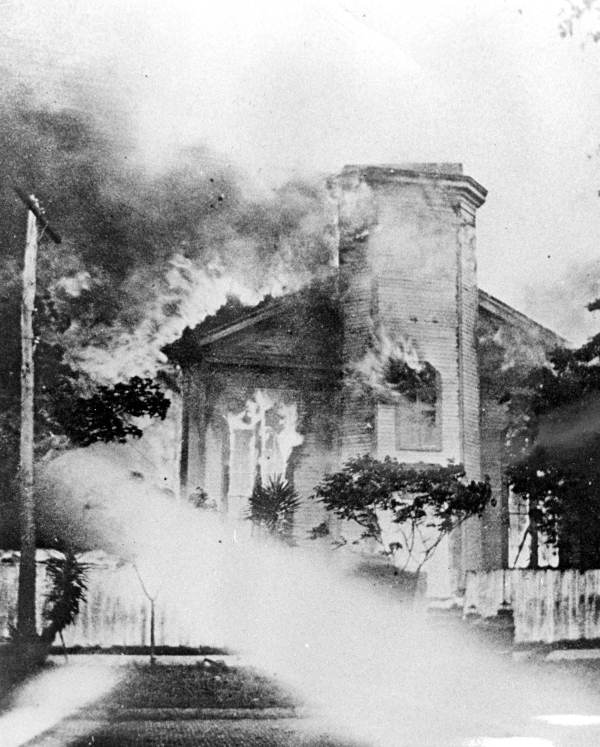
Flames consume one of Jacksonville’s Methodist churches, likely the one at the corner of Duval and Newnan street (1901).
By this time the whole of Jacksonville knew something was wrong. Even if they hadn’t heard the clanging of the fire engine bells, residents could already see a distant cloud of smoke billowing upward and working its way east over the neighborhoods. Families closer to the fire sprang into action, piling household goods into wagons and driving them away from the growing conflagration. Eager to help their neighbors, some people took their belongings only a few blocks away before unloading them and returning. Many of these possessions would later go up in flames before their owners could collect them.
Jacksonville’s fire department fought the blaze valiantly, but neither the wind nor technology was on their side. The fire marched steadily eastward, consuming block after block of wooden structures. Sidewalks, bricks, and concrete structures glowed red with heat and cracked or exploded. Columns of thick smoke rising from the burning city were reportedly seen from as far away as Raleigh, North Carolina.
Residents took shelter in the recently completed city armory, the Windsor Hotel, and the county courthouse, but eventually even those buildings had to be evacuated. Depending on their location, people hurried to get across either Hogan’s Creek or the St. Johns River to safety, the fire closing in behind them. At one point, the fire turned southward, trapping the massive crowd waiting at the Market Street Wharf to be transported across the St. Johns River. Desperate to get away from the approaching flames, many residents jumped into the water. This scene, which at the time was thought to have resulted in an enormous loss of life, was dubbed the “Market Street Horror.” Miraculously, despite widespread destruction of property, only seven persons are believed to have lost their lives in the blaze.
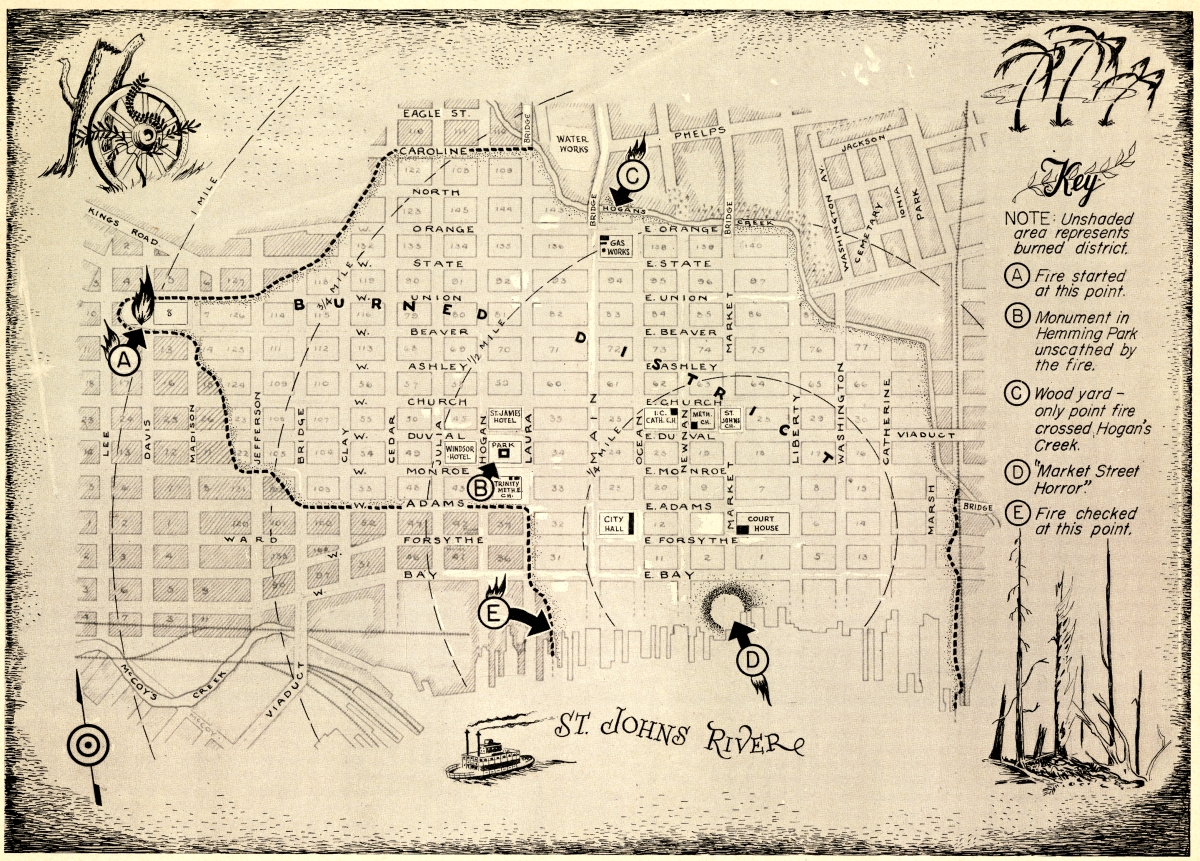
Map showing the path of the Great Jacksonville Fire of 1901. Reprinted in Carolina Rawls, The Jacksonville Story: A Pictorial Record of a Florida City (1950). Click the map to enlarge it.
By nightfall, the wind had died down, and the fire was running out of fuel. A total of 2,368 buildings and 466 acres of city territory had been burned to the ground. Twenty-three churches, ten hotels, and every single public building except one federal office structure was destroyed. National Guard troops rallied to the scene to preserve law and order, but the city itself was practically deserted. Nearly 10,000 people had lost their homes, and were forced to take up temporary residence in tents sent to Florida by the United States government.
Jacksonville recovered quickly from the Great Fire of 1901. Just six months after the disaster, the city played host to the Florida State Fair, and in 1903 residents marked their return to prosperity with an extravagant Gala Week and Trades Carnival. By 1913, 11,000 buildings had been erected to replace the ones consumed by the disaster. Residents and outside observers agreed — Jacksonville was back!
Cite This Article
Chicago Manual of Style
(17th Edition)Florida Memory. "The Great Jacksonville Fire of 1901." Floridiana, 2016. https://www.floridamemory.com/items/show/321980.
MLA
(9th Edition)Florida Memory. "The Great Jacksonville Fire of 1901." Floridiana, 2016, https://www.floridamemory.com/items/show/321980. Accessed January 7, 2026.
APA
(7th Edition)Florida Memory. (2016, May 5). The Great Jacksonville Fire of 1901. Floridiana. Retrieved from https://www.floridamemory.com/items/show/321980

 Listen: The World Program
Listen: The World Program
